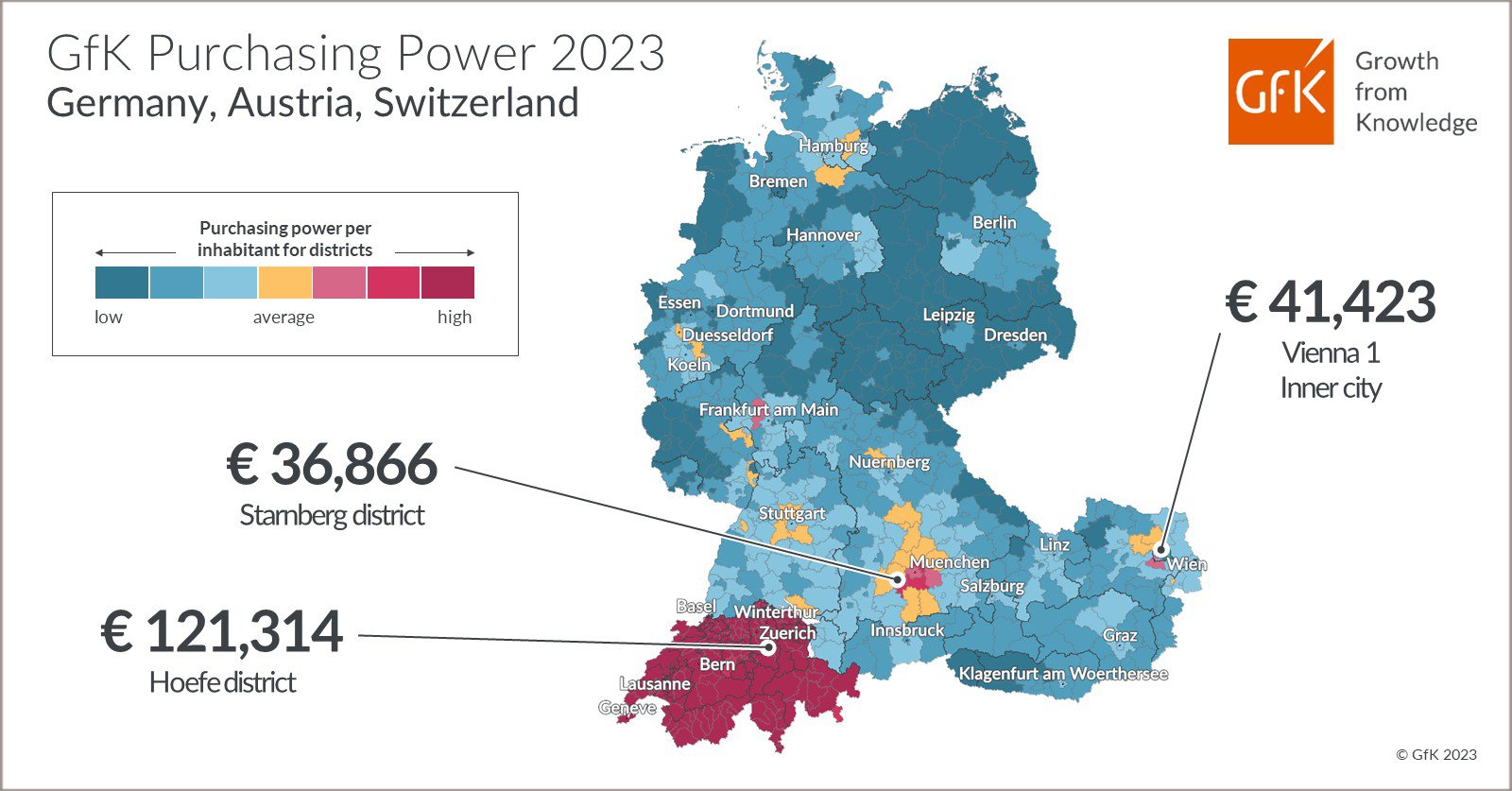GfK’s Map of the Month for April shows the regional distribution of purchasing power in Germany, Austria and Switzerland in 2023.
With €49,592 per inhabitant, the Swiss have a significantly higher purchasing power in 2023 than the inhabitants of Austria and Germany. Austrians have €26,671 per capita available for spending this year, while Germans have €26,271. However, there are significant regional differences in terms of net disposable income not only between countries, but also within each country.
In Switzerland, the district of Hoefe takes first place by far. There, people have an average of €121,314 at their disposal, almost 3.4 times as much as the inhabitants of Bernina, the region with the lowest purchasing power (€35,987). Among Austrians, Vienna’s 1st district (inner city) leads the way with a per capita purchasing power of €41,423, while Vienna’s 15th district (Rudolfsheim-Fuenfhaus) brings up the rear with €21,416. The purchasing power gap widens least in Germany: with a per capita purchasing power of €36,866, the Starnberg district tops the ranking of German districts; last place goes to Gelsenkirchen with a spending potential of €20,862 per inhabitant.


Download the map in high-resolution JPG format…
The map may be freely distributed and reproduced if the following attribution is included: “Illustration: GfK”.
Further insights into GfK’s market data offering can be found here.